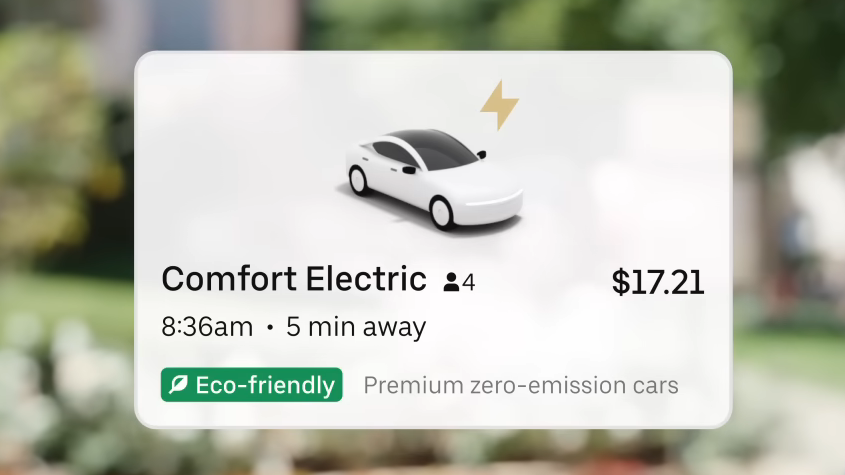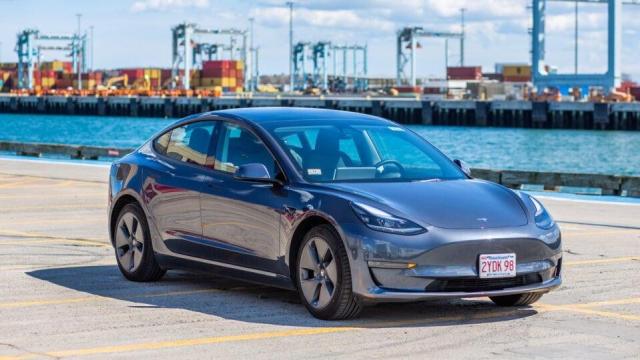Uber is expanding its EV options to more cities across the U.S., and is setting a deadline for drivers to transition to electric cars by 2030. Uber CEO Dara Khosrowshahi tells CBS that drivers who haven’t made the switch to an EV by then won’t be allowed back on its platform.
The latest expansion to Uber’s Comfort Electric service is a part of its goal to phase out gas-burning cars from its platform within the next few years. The Comfort Electric option is different from Uber Green in terms of vehicle eligibility; Uber Green includes hybrid and fully-electric models, but Comfort Electric requires drivers to operate fully-electric cars, exclusively.

It’s supposed to be a premium option, according to Car and Driver, providing rides in EVs from Tesla, Polestar and the Ford Mustang Mach-E. When Comfort Electric launched in May of 2022, it was available in select California cities and Dubai, but it’s now available throughout the U.S. and Canada in these cities:
Atlanta, Austin, Baltimore-Maryland, Boston, Charlotte, Chicago, Connecticut, Dallas, Denver, Houston, Las Vegas, Los Angeles, Miami, New Jersey, NYC Suburbs, Philadelphia, Portland, Sacramento, San Antonio, San Diego, San Francisco, Seattle, St Louis, Vancouver (Canada), Washington D.C.
Now that Uber has expanded Comfort Electric and committed to phasing out gas-burning cars, multiple outlets say the ride-hailing service is transitioning to a fully-electric fleet, but that’s a misnomer; Uber doesn’t have a fleet.
If it did, that would mean Uber has employees to pilot its so-called fleet, but Uber doesn’t have employees. Uber hosts “users” on its platform, which connects people driving their own cars with people who need a ride.
That’s how Uber has evaded the responsibilities of a traditional employer, and, now, that’ll to apply to the “fleet’s” EV transition, too. Uber won’t foot the bill for drivers to switch from ICE-equipped cars to EVs; instead, it’ll be offering incentives to convince drivers to go electric, per CBS:
Uber is trying to slash its carbon footprint by incentivising its drivers to switch to EVs.
But they are not cheap. Electric vehicles cost an average of $US60,000 ($83,292). Uber plans to spend $US800 ($1,111) million to help offset the cost for its drivers.
The company is also paying drivers a dollar for every EV trip they make and providing discounts on charging. Uber is partnering with Hertz to allow drivers to have the option of renting Teslas on a weekly or monthly basis.
At best, Uber will provide a Hertz rental for drivers to continue picking up fares after the 2030 EV deadline, and a few other incentives. Admittedly, these have made a difference, with one driver citing a $US200 ($278) increase in fares per week.
But then again, the price of these Hertz EV rentals ranges from $US299 ($415) to $US334 ($464) per week, so what’s the net gain? What’s worse, with the price of EVs not going down any time soon, I wonder if the extra money Uber drivers make will ever actually be enough to afford the same EV they’ll depend on, and become just another business — sorry, personal expense.

